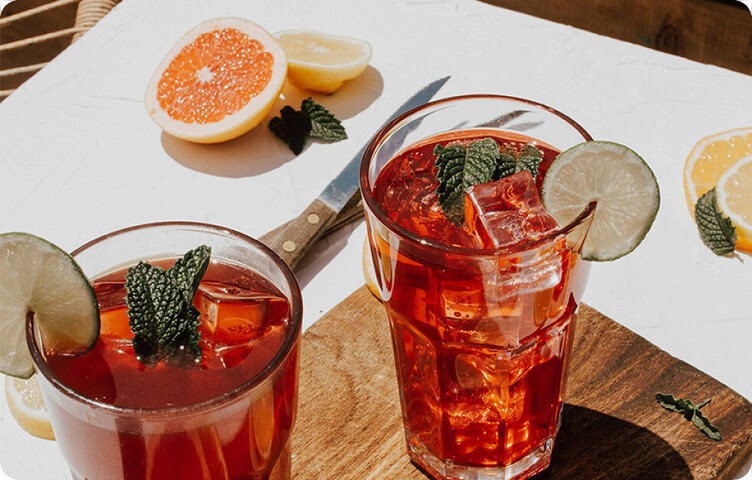Zero waste technology has been practiced all over the world for decades. The message of this method is quite simple - minimize waste, preserve nature and be conscious of consumption.
“Waste-free” production came to the bar environment relatively recently; the first trainings and lectures in the capital began to be given by bartenders 8-10 years ago. And during this period, the community has made quite significant progress in using the product holistically.
Zero waste: from simple to complex

When a bartender prepares a cocktail, a large amount of organic waste is formed: peels, seeds, citrus pulp, etc. Why is this garbage? Yes, because it is not edible and the simplest thing you can do with it is just throw it away. But the deeper the profession takes root, and the more consciously professionals approach their work, the more nuances he is able to discern. The same happened with organic waste. Through experiments and exchange of experience, bartenders found out that, for example, an empty half of a lime, when frozen, becomes an ideal bowl for berries and a top decoration, and fruit pulp makes an excellent scrub.
Therefore, in recent years, bartenders have been making full use of Zero waste technology, creating very unexpected combinations and solutions.
Technologies in waste-free production
Working in the direction of Zero waste, bartenders use technologies for dehydrogenation (dehydration, drying) of vegetables and fruits, sous vide (cooking in a vacuum at low temperatures), infusions (aromatic extracts) and much more.
Recipes

Fruit Shrub
Fruit cake, for example, apples, pears, oranges, which is left over from making fresh juices, can be mixed with sugar and apple cider vinegar in a 1:1:1 ratio, placed in sous vide for several hours and you get an interesting scrub that can be stored and experimented with for a long time. drinks
Compression infusion from the peel
The zest is unique for its porous structure, which perfectly conveys its flavor and aromatic characteristics to alcohols. Compression infusion technology involves immersing a product (zest of various citrus fruits, for example, left after squeezing fresh juice) and alcohol into a vacuum environment. When vacuuming occurs, the flavoring and aromatic substances of the product are instantly extracted into a liquid (alcohol base), and literally within a day you can get a high-quality tincture and use it as an independent product or as a base for cocktails.
Citrus Chalet
Bartenders quite often use a squeezer in the workplace, and after squeezing juice from citrus fruits, this equipment leaves halves of fruit (lime, lemon, orange). The zero-waste technology suggests cleaning these halves, rinsing them thoroughly and placing them in the freezer. The end result will be a neat, bright chalet that can be filled with berries or marmalade, pomegranate seeds, or whatever suits the cocktail being served. And then place the chalet on a glass, sprinkle with powdered sugar or dehydrated soil and serve to the guest.
In fact, the technology of waste-free production, or at least cooking with minimal waste, is quite simple, but takes a lot of time. Of course, the bar team first needs to convey the ideology of such use, but believe me, once bartenders start experimenting, they simply will not be able to stop, and what previously ended up in waste will serve as unique taste, and sometimes visual, tools for attracting new and retaining regular guests.
















































/https%3A%2F%2Fcomplexbar.com%2Fimages%2Fblog%2F243%2Fzero-waste-v-bare.jpg)
/https%3A%2F%2Fcomplexbar.com%2Fimages%2Fblog%2F246%2Funiforma-barmena.jpg)
/https%3A%2F%2Fcomplexbar.com%2Fimages%2Fblog%2F246%2Fkak-nanyat-barmena.jpg)
/https%3A%2F%2Fcomplexbar.com%2Fimages%2Fblog%2F246%2FMadler.jpg)
/https%3A%2F%2Fcomplexbar.com%2Fimages%2Fblog%2F246%2F2024-04-09_17.22.54.jpg)
/https%3A%2F%2Fcomplexbar.com%2Fimages%2Fblog%2F246%2F2024-04-09_17.22.47.jpg)
/https%3A%2F%2Fcomplexbar.com%2Fimages%2Fblog%2F246%2FCODE_anons_foamydrops_752%D1%85480_eng.jpg)
/https%3A%2F%2Fcomplexbar.com%2Fimages%2Fblog%2F246%2FAlina_752%D1%85480_eng.jpg)
/https%3A%2F%2Fcomplexbar.com%2Fimages%2Fblog%2F246%2F2024-04-09_17.23.22.jpg)
/https%3A%2F%2Fcomplexbar.com%2Fimages%2Fblog%2F246%2F2024-04-09_17.23.28.jpg)
/https%3A%2F%2Fcomplexbar.com%2Fimages%2Fblog%2F246%2F2024-04-09_17.23.35.jpg)
/https%3A%2F%2Fcomplexbar.com%2Fimages%2Fblog%2F246%2Fdrinksome_752%D1%85480_eng.jpg)
/https%3A%2F%2Fcomplexbar.com%2Fimages%2Fblog%2F246%2Fnude_752%D1%85480_eng.jpg)
/https%3A%2F%2Fcomplexbar.com%2Fimages%2Fblog%2F246%2F752%D1%85480_eng__1_.jpg)
/https%3A%2F%2Fcomplexbar.com%2Fimages%2Fblog%2F246%2F752%D1%85480_eng.jpg)
/https%3A%2F%2Fcomplexbar.com%2Fimages%2Fblog%2F246%2FStudioRaw_752%D1%85480_eng.jpg)
/https%3A%2F%2Fcomplexbar.com%2Fimages%2Fblog%2F246%2FDoppio_tea_752%D1%85480_eng.jpg)
/https%3A%2F%2Fcomplexbar.com%2Fimages%2Fblog%2F246%2FTognana_Stars_Stripes_752%D1%85480_eng.jpg)
/https%3A%2F%2Fcomplexbar.com%2Fimages%2Fblog%2F246%2FRona_752%D1%85480_eng.jpg)
/https%3A%2F%2Fcomplexbar.com%2Fimages%2Fblog%2F246%2FDoppio_vending_752%D1%85480_eng.jpg)
/https%3A%2F%2Fcomplexbar.com%2Fimages%2Fblog%2F246%2FEssence_sukhie_smesi_752%D1%85480_eng.jpg)
/https%3A%2F%2Fcomplexbar.com%2Fimages%2Fblog%2F246%2FODK_sukhie_smesi752%D1%85480_eng.jpg)
/https%3A%2F%2Fcomplexbar.com%2Fimages%2Fblog%2F246%2Funiforma-barmena.jpg)
/https%3A%2F%2Fcomplexbar.com%2Fimages%2Fblog%2F246%2Fkak-nanyat-barmena.jpg)
/https%3A%2F%2Fcomplexbar.com%2Fimages%2Fblog%2F246%2Fsirop_scale_2400.jpeg)
/https%3A%2F%2Fcomplexbar.com%2Fimages%2Fblog%2F246%2FPeugeot_Anons_Paris_U%27Select_Line_Daman_752%D1%85480_eng.jpg)
/https%3A%2F%2Fcomplexbar.com%2Fimages%2Fblog%2F246%2Fkofe-vostochniy.jpg)
/https%3A%2F%2Fcomplexbar.com%2Fimages%2Fblog%2F246%2FMadler.jpg)
/https%3A%2F%2Fcomplexbar.com%2Fimages%2Fblog%2F246%2Fprofbartender_glavn.jpeg)